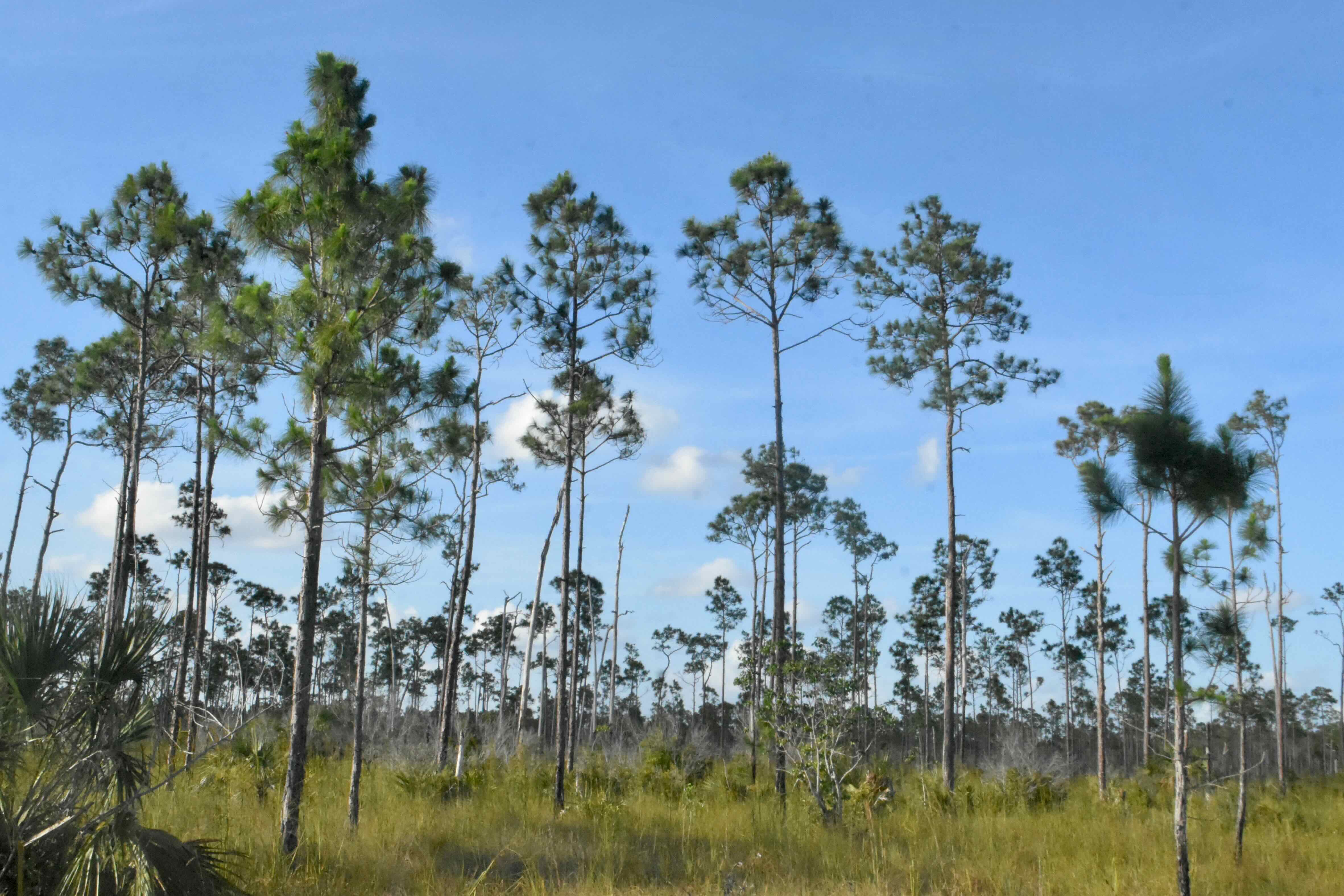Plants and animals aren't the only bits of nature that can become endangered. So can habitat. In this case, the pine rocklands of Miami-Dade and Monroe counties. At one point, pine rocklands covered 186,000 acres in the two counties, and were home to hundreds of plant species, some of which are found nowhere else on the planet and some of which are either considered endangered or threatened. The destruction of pine rocklands makes their continued existence uncertain at best.
Pine rocklands are marked by oolitic limestone either exposed on the surface or covered by a thin layer of nutrient-poor soil and an open canopy of slash pines and palms. The understory is a patchy mix of saw palmetto, wax myrtle, myrsine and similar shrubs. Various grasses provide ground cover. Pine rocklands are usually a little higher and drier than surrounding lands, making them home to a variety of animals as well.
About 80 percent of the remaining pine rockland habitat, 14,211 acres, is within Everglades National Park. Oolitic limestone, by the way, is limestone that is composed of spherical grains of calcium carbonate called ooids bound together by a hardened calcium mud. This rock is responsible for some of the unusual geologic features within Everglades National Park, which we'll touch on later in the tour.
NEXT STOP: The Royal Palms of Royal Palm
RETURN TO THE TOUR PAGE —||— RETURN TO THE MAIN PAGE
Pine rocklands are marked by oolitic limestone either exposed on the surface or covered by a thin layer of nutrient-poor soil and an open canopy of slash pines and palms. The understory is a patchy mix of saw palmetto, wax myrtle, myrsine and similar shrubs. Various grasses provide ground cover. Pine rocklands are usually a little higher and drier than surrounding lands, making them home to a variety of animals as well.
About 80 percent of the remaining pine rockland habitat, 14,211 acres, is within Everglades National Park. Oolitic limestone, by the way, is limestone that is composed of spherical grains of calcium carbonate called ooids bound together by a hardened calcium mud. This rock is responsible for some of the unusual geologic features within Everglades National Park, which we'll touch on later in the tour.
NEXT STOP: The Royal Palms of Royal Palm
RETURN TO THE TOUR PAGE —||— RETURN TO THE MAIN PAGE

